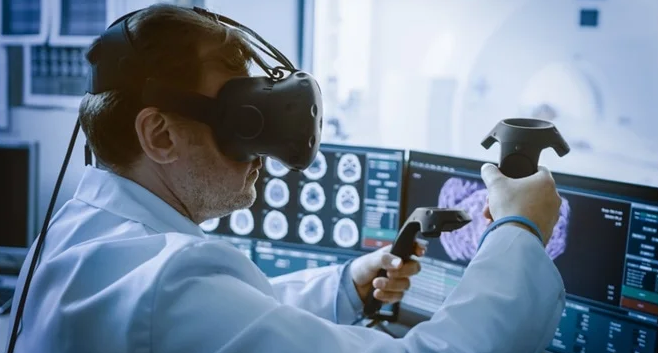
Imagine a world where a top-tier surgeon in a metro city can perform a life-saving procedure on a patient in a remote village in Northeast India without either of them needing to leave their location. This scenario is now a reality, thanks to telesurgery. As an innovative extension of telemedicine, telesurgery today merges cutting-edge robotics with advanced telecommunications, overcoming geographical barriers and transforming the landscape for cancer care.
Evolution of Tele-surgery
The roots of telesurgery can be traced back to the 1970s when NASA began exploring ways to treat astronauts in space. However, a major breakthrough came on September 7, 2001, with the “Lindbergh Operation,” the first successful transatlantic surgery. Professor Jacques Marescaux, situated in New York City, performed a cholecystectomy on a patient in Strasbourg, France, demonstrating the incredible potential of remote surgery. This landmark procedure set the stage for further advancements in telesurgery, driven by improvements in robotics and telecommunication technologies.
Telesurgery’s Emergence in India
For a country like India, tele-surgery will pave the next leap of advancements in healthcare, as access to specialised healthcare is limited by geography and infrastructure. The recent expansion of 5G networks has been furthermore beneficial in providing fast and stable data streams necessary for efficient remote surgeries.
Its impact in Cancer Care
Tele-surgery will also be revolutionizing in the field of cancer care in the years to come.
It will lead to enhanced surgical precision and safety: Telesurgery is equivalent to accuracy of complex procedures, reducing the risk of complications in comparison to when surgeon is sitting in an operation room. High-resolution 3D cameras and robotic arms offer better access to hard-to-reach areas, leading to fewer surgical errors and less damage to surrounding tissues. This precision is particularly crucial in cancer surgeries, where removing the tumour without affecting surrounding healthy tissue can significantly impact patient outcomes.
Will lead to minimally invasive procedures: For cancer patients, who often undergo multiple treatments, the minimally invasive nature of telesurgery reduces blood loss, pain, and the likelihood of infections. Such patients benefit from smaller incisions, which result in reduced scarring and faster recovery times. Quicker recovery means they can resume their daily lives and other necessary treatments sooner.
Will drive accessibility and convenience: For the cancer patients, who find it difficult to travel, due to health or distance issues, tele-surgery can relief them from the unnecessary mental, physical and financial stress of travelling.
A significant milestone in cancer care was recently achieved by RGCIRC, which performed India’s first cancer led telesurgery and successfully completed its clinical trial. Utilizing the SSI Mantra, an indigenous surgical robot, a patient with urinary bladder cancer was successfully operated on remotely from Gurugram, while the patient remained at the RGCIRC Rohini Centre in Delhi.
This is only the beginning, the future of telesurgery, particularly in cancer care, promises to be truly remarkable. This expansion will bring in a new era of tele-proctoring and remote surgical training, ensuring that even patients in smaller towns and rural areas have access to the best possible care. As robotic systems become more affordable and accessible, their deployment across tier 2 and 3 cities could democratize high-quality surgical care. The future of cancer care lies in harnessing such innovations to ensure that every patient, no matter where they are, receives the best possible treatment.
This article is written by Dr. Sudhir Kumar Rawal, Medical Director & Chief of Genito-Uro Oncology, Rajiv Gandhi Cancer Institute and Research Centre.
(DISCLAIMER: The views expressed are solely of the author and ETHealthworld.com does not necessarily subscribe to it. ETHealthworld.com shall not be responsible for any damage caused to any person/organisation directly or indirectly)


